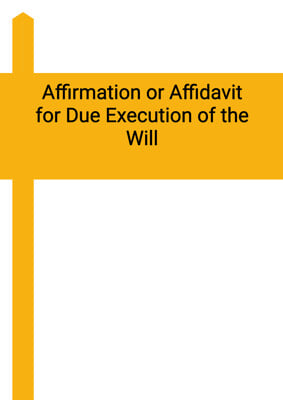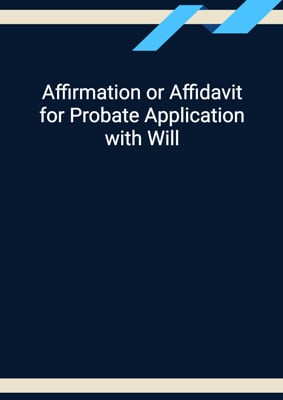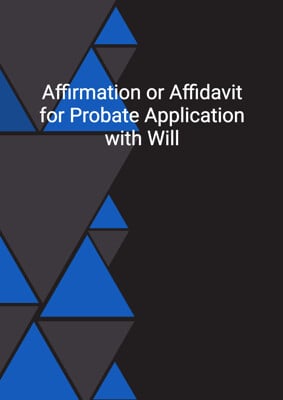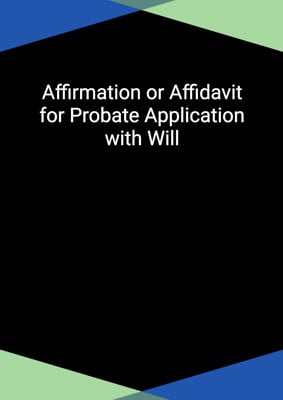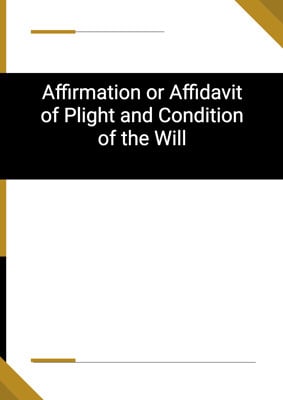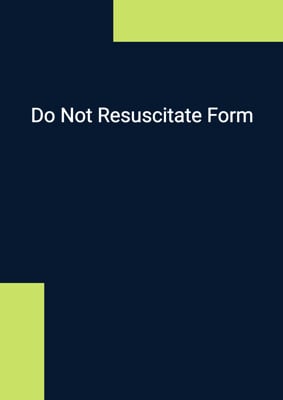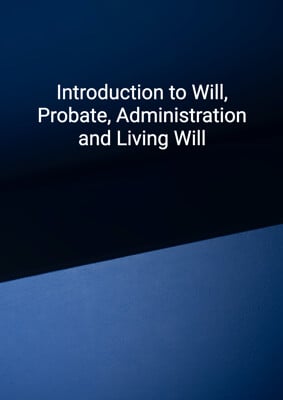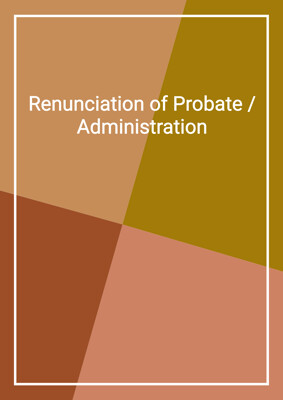How to Tailor the Document for Your Need?
01
Create Document
Fill in the details of the parties. You can click the "Fill with Member’s Information" button to complete it with information saved to your account.
02
Fill Information
Please fill in any additional information by following the step-by-step guide on the left hand side of the preview document and click the "Next" button.
03
Get Document
When you are done, click the "Get Document" button and you can download the document in Word or PDF format.
04
Review Document
The document should be signed by the authorised signatory (or directors of a company) and witnessed to complete the formality.
Document Preview
Document Description
The document titled 'Affirmation or Affidavit as to Alterations in Will' is a legal document used in the court of domicile. It is used in the estate of a deceased person to affirm or make an oath regarding alterations made in their will. The importance of this document lies in its ability to provide evidence and clarification regarding any changes made to the original will.
The entire document consists of a title, content, and signature. The title clearly states the purpose of the document, which is to affirm or make an oath regarding alterations in a will. The content of the document includes a statement of affirmation or oath, followed by numbered paragraphs.
Each section of the document serves a specific purpose. Section 1 introduces the affirmer or affiant as one of the subscribing witnesses to the deceased's last will. It mentions that the will is being produced and marked as 'a'.
Section 2 describes how the deceased executed the will by signing their name at the end, in the presence of the affirmer and another witness. It states that both witnesses attested and subscribed to the will in the presence of the deceased.
Section 3 focuses on examining the specific interlineation or alteration in the will. It confirms that the affirmer has examined the alteration and states whether it was made before or after the execution of the will.
The signature section includes the name of the affirmer or affiant and their affirmation or oath. It also includes the location and date of the affirmation or oath.
Overall, this document plays a crucial role in providing evidence and clarification regarding alterations made in a will, ensuring the validity and integrity of the deceased's intentions.
How to use this document?
1. Read the document carefully: Familiarize yourself with the content of the document, including the title and the numbered paragraphs.
2. Understand the purpose: Recognize that the document is used to affirm or make an oath regarding alterations in a will.
3. Identify the affirmer or affiant: Note the name and position of the person making the affirmation or oath.
4. Determine the type of affirmation or oath: Differentiate between an affirmation and an oath based on the content of the document.
5. Verify the execution of the will: Ensure that the deceased signed the will at the end, in the presence of the affirmer and another witness.
6. Examine the interlineation or alteration: Pay close attention to the specific change made in the will and determine whether it was made before or after the execution.
7. Confirm the truthfulness: Acknowledge the affirmer's affirmation or oath regarding the truthfulness of the contents of the document.
8. Sign and date the document: Complete the document by adding the affirmer's or affiant's name, location, and current date.
9. Store the document securely: Keep the affirmed or sworn document in a safe place for future reference or legal proceedings.
Not the right document?
Don’t worry, we have thousands of documents for you to choose from:


